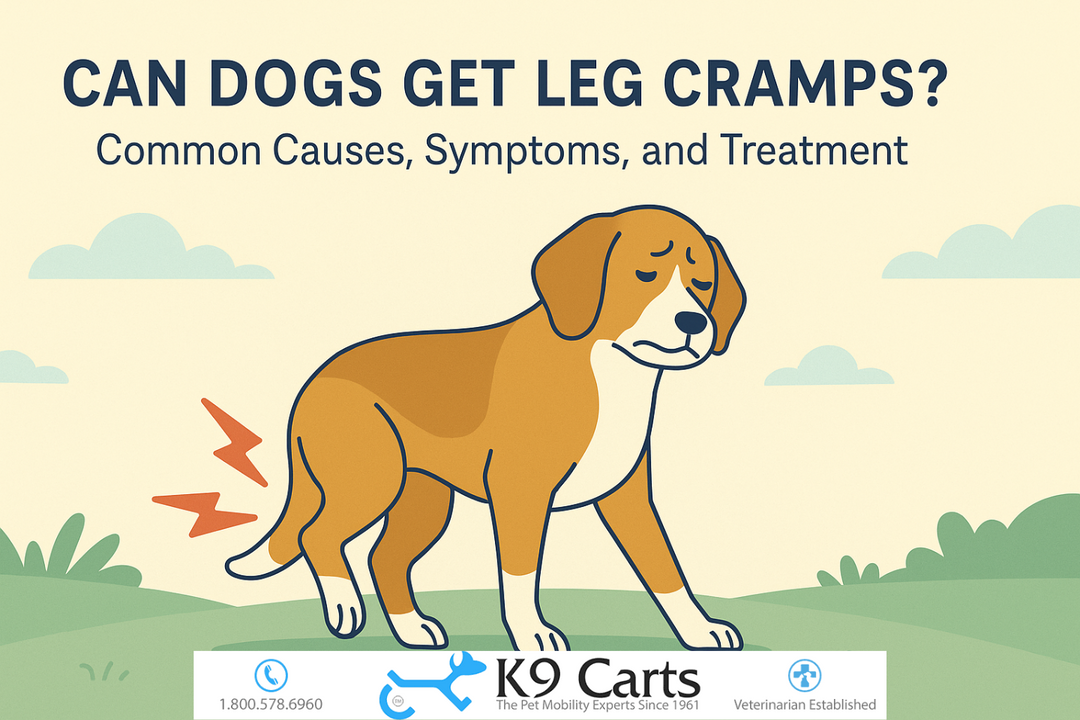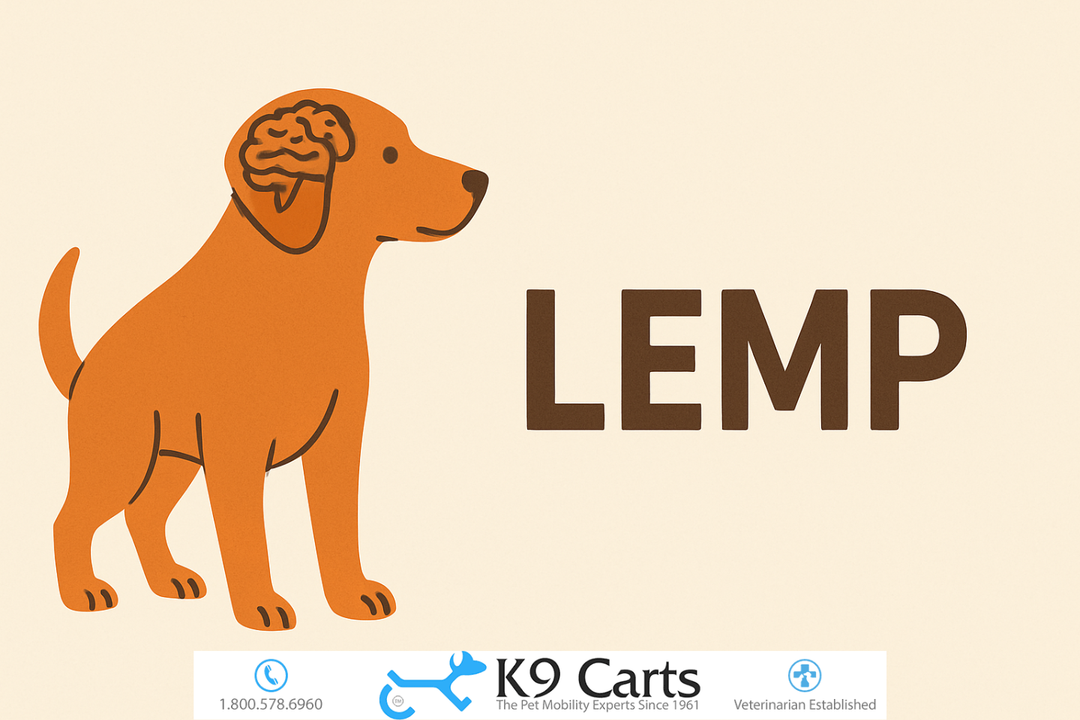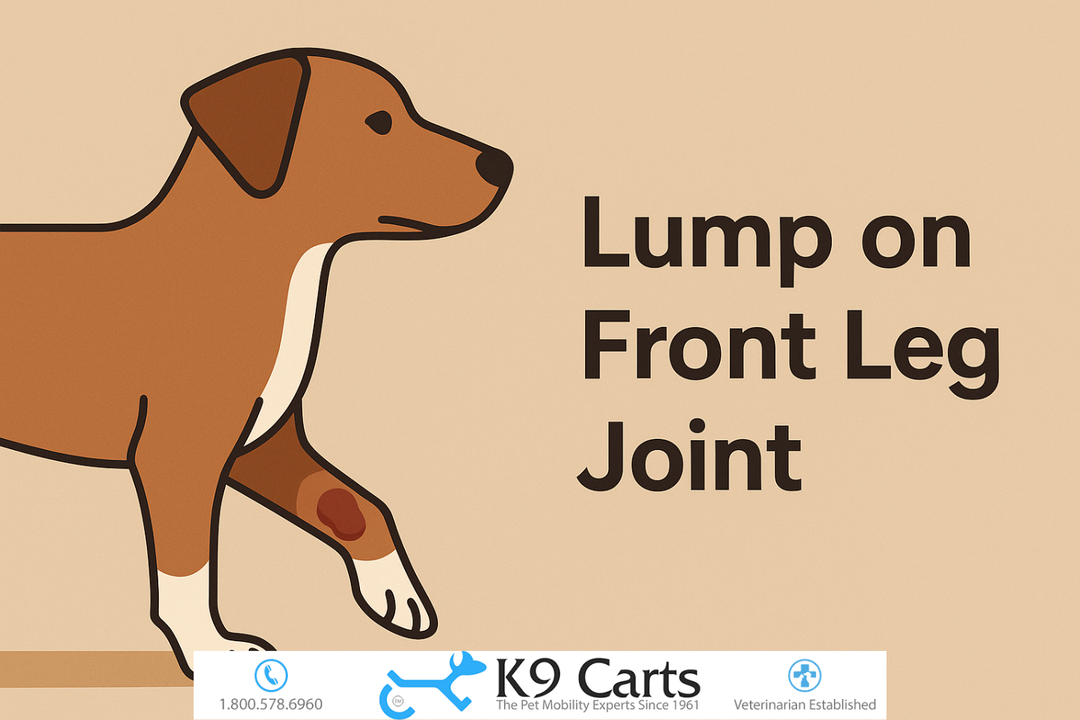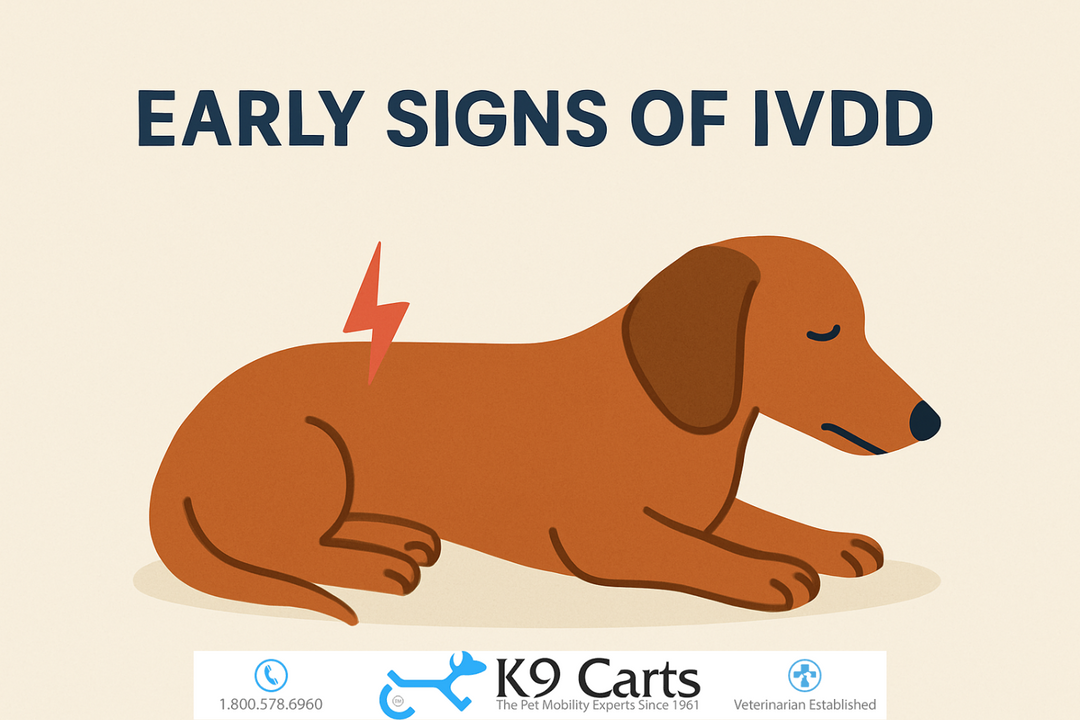Can Dogs Get Leg Cramps? Common Causes, Symptoms, and Treatment

If you've ever seen your dog suddenly stop mid-play, lift a leg, or let out a soft whine before sitting down, you might have wondered if something like a leg cramp was to blame. The answer is yes, dogs can get leg cramps. It’s not the most common condition we think of with our canine companions, but it happens… and when it does, it can be uncomfortable or even painful for them.
Understanding what’s going on beneath the surface is important. Not every twitch or limp is serious, but some can signal a larger issue. On this page, we’ll take a close look at why leg cramps occur in dogs, what signs to look for, how to manage them, and how to tell when it's time to call your veterinarian.
What Leg Cramps Look Like in Dogs
Leg cramps are involuntary contractions or spasms in a muscle. For dogs, these typically appear in the hind legs but can also affect the front legs. When a cramp hits, it often causes your dog to limp, stretch awkwardly, or stop moving entirely.
Some dogs show visible discomfort. Others may try to walk it off or sit until it passes. The muscle may feel hard or tight to the touch, and in some cases, you’ll see it twitching beneath the skin. It usually resolves within a few minutes, but when these episodes become regular or severe, they may point to something more complex than simple fatigue.
What Causes Leg Cramps in Dogs?
Just like people, dogs get cramps for a variety of reasons. In most cases, the cause isn’t serious. Still, understanding what could be contributing can help you take action and prevent repeat episodes.
1. Overexertion
This is one of the most common causes, especially in active breeds. Dogs that exercise vigorously without enough breaks can experience muscle fatigue. When muscles are overworked, especially in hot or humid conditions, they can seize up temporarily.
2. Dehydration
When dogs don’t drink enough water, especially after exercise or in warm weather, the balance of electrolytes in their bodies can shift. Electrolytes like potassium and sodium are critical to proper muscle function. A deficit can easily trigger a cramp.
3. Poor Nutrition or Imbalances
Diet plays a central role in muscle health. A lack of calcium, magnesium, or B vitamins can impair muscle control. Commercial dog food from reputable brands usually provides balanced nutrition, but dogs on homemade diets or with specific absorption issues may fall short in key areas.
4. Nerve-Related Conditions
Sometimes the problem starts in the nervous system. Conditions that interfere with nerve signaling, like intervertebral disc disease, degenerative myelopathy, or nerve trauma, can result in uncoordinated muscle contractions, including cramps.
5. Cold Exposure
Cold muscles are more likely to spasm. Dogs exposed to chilly weather after intense activity may be more prone to cramps, especially if they’re short-haired or older.
6. Toxins and Medications
Certain toxins and medications can disrupt the way muscles contract. Ingestion of chocolate, xylitol, or pesticides, for example, may lead to muscle tremors or cramping. Some prescribed medications might also have cramping or spasms as a side effect.
7. Underlying Health Problems
Several systemic diseases can cause cramps as a secondary symptom:
-
Hypothyroidism, which slows metabolism and affects muscle tone.
-
Kidney disease, which can upset electrolyte levels.
-
Addison’s disease, which affects adrenal hormone production.
These conditions usually come with other symptoms, like lethargy, vomiting, or appetite changes, but cramps may be among the first signs you notice.
Spotting the Signs of a Cramp
Leg cramps don’t always present the same way, and dogs tend to hide discomfort when they can. That’s why it helps to know what to watch for.
Here are the signs that may indicate your dog is experiencing a cramp:
-
Sudden limping or hesitation to put weight on a leg
-
Visible muscle twitching or tightening
-
Stiffness during movement
-
Sitting or lying down suddenly during activity
-
Yelping or vocalizing during a spasm
-
Attempting to stretch the leg or licking it
-
Difficulty standing up after resting
If your dog shows any of these signs and they pass quickly, it may just be a cramp. If they linger or return frequently, that’s a cue to speak with your veterinarian.
How to Tell Cramps from Something More Serious
It’s easy to mistake a cramp for something else, like arthritis, injury, or even a seizure. A good rule of thumb is to observe the pattern. Cramps tend to:
-
Come on suddenly during or after exercise
-
Last a few seconds to a few minutes
-
Resolve with rest or gentle stretching
-
Affect one muscle or limb at a time
In contrast, joint issues or injuries don’t improve as quickly, and neurological problems may involve more dramatic symptoms, like disorientation or full-body tremors.
If you’re unsure, it’s always better to err on the side of caution and get a professional opinion.
What You Can Do at Home
For mild or occasional cramping, there are steps you can take right away to ease your dog’s discomfort.
-
Stop the activity: Let your dog rest immediately when signs of a cramp appear.
-
Massage gently: Light pressure and slow circular movements over the affected area can relax the muscle.
-
Apply heat: Use a warm towel or heating pad on a low setting for 5–10 minutes.
-
Encourage hydration: Offer fresh water and encourage your dog to drink.
-
Stretching: Carefully stretch the affected limb if your dog allows it. Never force the movement.
These steps usually help ease the spasm. If your dog seems distressed or if the symptoms recur, don’t delay in getting veterinary guidance.
Veterinary Care and Long-Term Support
If leg cramps become a pattern or if they seem to be increasing in frequency or intensity, it’s time for a deeper evaluation. Your vet may suggest:
-
Blood tests to check for electrolyte levels and organ function
-
Imaging (X-rays or MRIs) to assess for joint or spinal problems
-
Dietary changes or supplementation
-
Medication to manage pain or reduce muscle spasms
-
Physical therapy to strengthen muscle tone and coordination
In some cases, treatment of the underlying issue is enough to eliminate the cramping. In others, especially with chronic nerve or muscle conditions, supportive tools may be needed.
When Mobility Becomes a Struggle: How K9 Carts Can Help
Chronic cramping or muscle weakness doesn’t always go away, especially in senior dogs or those with neurological disease. In these cases, mobility support becomes essential, not just for comfort but for safety and confidence.
That’s where custom-built dog wheelchairs come into the picture. K9 Carts has been designing canine wheelchairs for decades, and what sets them apart is the individualized approach. Each wheelchair is tailored to your dog’s exact needs, size, and condition, whether it’s hind leg weakness, spinal issues, or recovery from surgery.
A well-fitted wheelchair gives your dog back some independence. It reduces the strain on cramped muscles, prevents falls, and allows them to continue exploring their world with more ease.
Mobility aids aren’t just for dogs with paralysis. They’re useful for any dog that struggles to move consistently due to pain, weakness, or fatigue. With the right cart, many dogs live active, happy lives well into their senior years.
A Practical, Caring Approach to Muscle Cramps
Seeing your dog in discomfort, even briefly, can be unsettling. The good news is that most leg cramps are manageable and, with the right steps, often preventable. Still, they shouldn’t be ignored, especially when they become a pattern.
By staying observant, addressing lifestyle factors like exercise and hydration, and seeking veterinary care when needed, you can support your dog’s muscle health and overall mobility.
And if your dog needs extra help, whether from age, injury, or chronic conditions, tools like K9 Carts offer a way forward. Because every dog deserves to keep moving with confidence and comfort.






